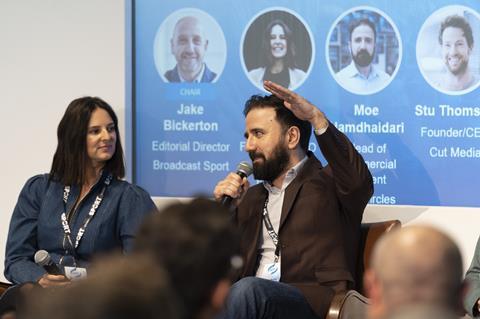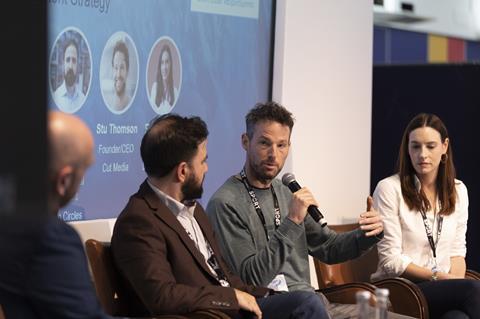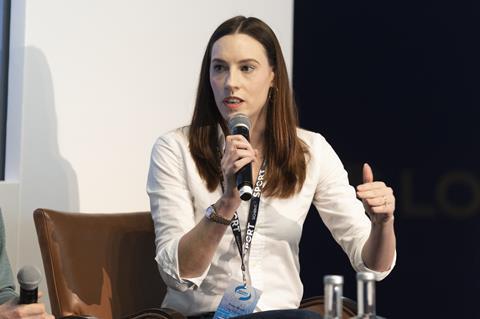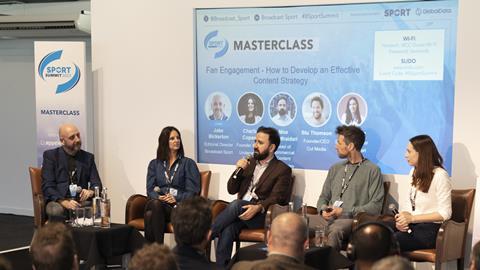At the Broadcast Sport Content Summit, top sports content makers revealed the thinking behind industry-leading campaigns that have engaged and entertained fans and athletes alike
CHARLIE COPSEY (Founder & chief executive, Underground Fan Club) I produced Fighting Talk on BBC Radio 5 Live for many years and, through my relationships with talent, I realised it was important to tap into something they love doing and that provides a platform where they can be themselves and have a good time.
The idea of Underground Fan Club was to connect fans with talent – there was a massive gap in the market for that. We started doing events in the sports space, working closely with brands, and we’ve also branched out into podcasts and content. It’s about creating an authentic place for fans, talent and brands to connect.
MOE HAMDHAIDARI (Head of commercial content, Two Circles) If you think about fan engagement as the destination, a content strategy is your plan for getting there. There are several levers you can pull on: Who is your audience? What are you trying to do? What are your distribution channels? How do you want to get your content out? What type of content is it? And what purpose does your content have?
STU THOMSON (Founder & chief executive, Cut Media) Over the years, as the market for sports content has become more saturated, we’ve become more strategic. We’re looking at our content and asking how we can set it up for success. You want a great format and a great idea at the heart of it, as well as great storytelling.
FIONA WOOD (Strategy director, Little Dot Sport) Obviously there has to be nuance between every sport and every brand, but I try to think about different approaches to fan engagement. The first is to know your audience and what you are trying to do with them. Are you trying to sell them tickets? Build the brand? Enhance your players’ profile?
“Just because a trend is engaging on TikTok, that doesn’t mean a brand should be on it”
Fiona Wood
Finally, I think about what the brand is. Just because a trend is engaging on TikTok, that doesn’t mean that brand should be on it. It needs to be authentic. If you get those main components right, you will engage with your fanbase.

CC Earlier this year, we did an event with Silverstone. They came to us and said: ‘We’ve got George Russell for the night, and we don’t know what to do with him. Can you help?’ They wanted to create an event and were very clear about wanting to attract new members. So we created an entertainment-led panel show featuring comedian Kae Kurd, who is a big F1 fan, racer Jolyon Palmer and F1 commentator Laura Winter. It was a great mesh of characters.
We wanted the experience to be great for George too – we have to remember that talent are human beings and if you want to engage with them, it’s important that they’re part of the strategy and storyline. You need their buy-in. If they’re having a good time, the audience are going to see that, and everything is more authentic.
It’s also about building the brand into that narrative, making sure they’re part of the integration.
MH We’ve been very fortunate to work with Wimbledon for the past 12 years to support its content output. As part of its strategy to reach a younger audience, we’ve helped to develop an animated series with two characters called Blade and Bounce. They are bringing the rich history and heritage of Wimbledon to a new audience.
It’s in its third season on YouTube and because it’s original IP, it has helped Wimbledon go beyond just YouTube – into experiential events, magazines and so on. We believe there’s a real gap in the market for kids’ content.

ST Red Bull runs an event in Chile called the Valparaiso Urban Mountain Bike Race, and came to us asking for help with faltering engagement. The most successful content on socials had been GoPro footage from riders, so we looked at how we could reinvent this and position it in a new way.
We decided to work with an FPV drone, which was technically challenging because we wanted to cover this route right across the city in one long continuous drone shot. Red Bull wanted to use the shot across all different platforms but with a hero piece on YouTube.
Once we came up with this idea, we looked at how to package it specifically for a YouTube audience. It was presenter-led, but there were no talking heads, and it was very quick-moving. It ended up being Red Bull’s globally most engaged piece of content last year.
FW Every month we generate about 9 billion views through all the channels and content we manage. That supplies us with a lot of data, which we use to inform our content strategies.
What should you avoid doing?
FW Everyone’s seen commercial partner content or branded content that’s been executed in a poor way. It doesn’t do anything for the brand, the rights holder or the audience. Sometimes brands want long-form storytelling content, but ultimately they want performance-led results. And often those two things don’t go hand in hand.

ST What doesn’t tend to work well is when there’s an athlete given a script to work with – they’re not an actor, they’re an athlete. Or when they’re put in a situation that just doesn’t feel comfortable. We have this triangle of the athlete, the brand and the production side, and those three work together to come up with something that’s really credible.
If you bring an athlete into the conversation, you will often find they’re extremely passionate about their sport and how they come across. If you can get their buy-in, you’re most likely to get their audiences’ buy-in too.
CC Off the back of what Stu said, when we work with brands, a lot of the time talent can be an afterthought. You want to get the right people involved at the beginning, because they can help mould the narrative.






























No comments yet